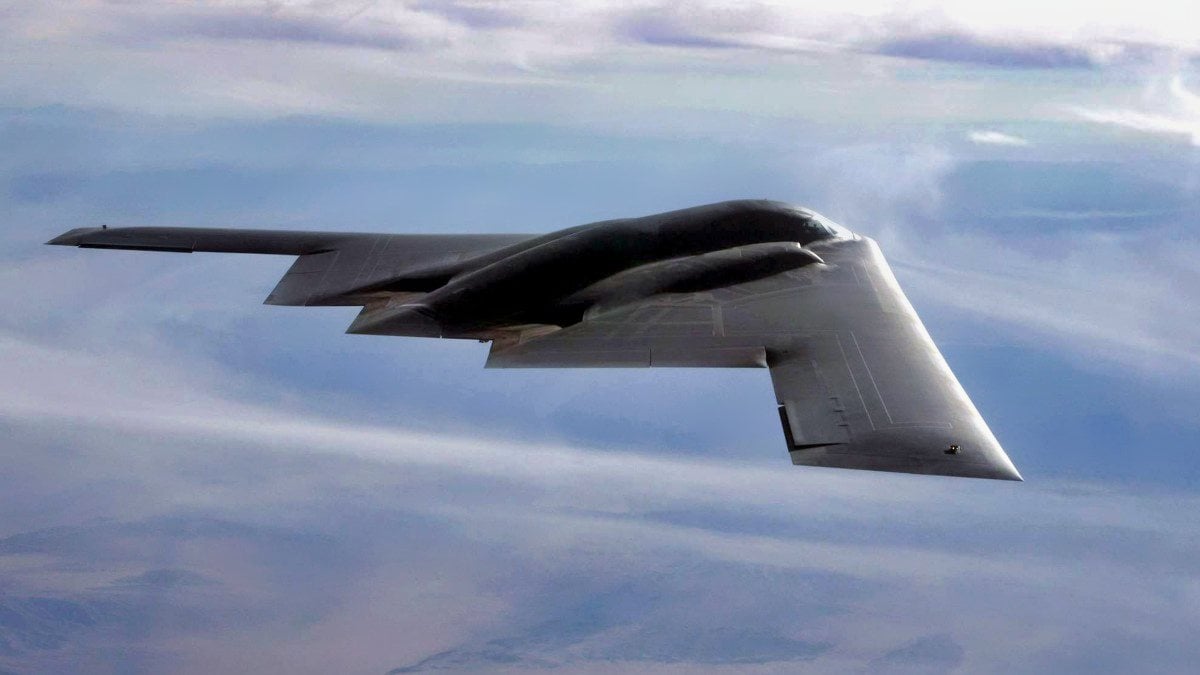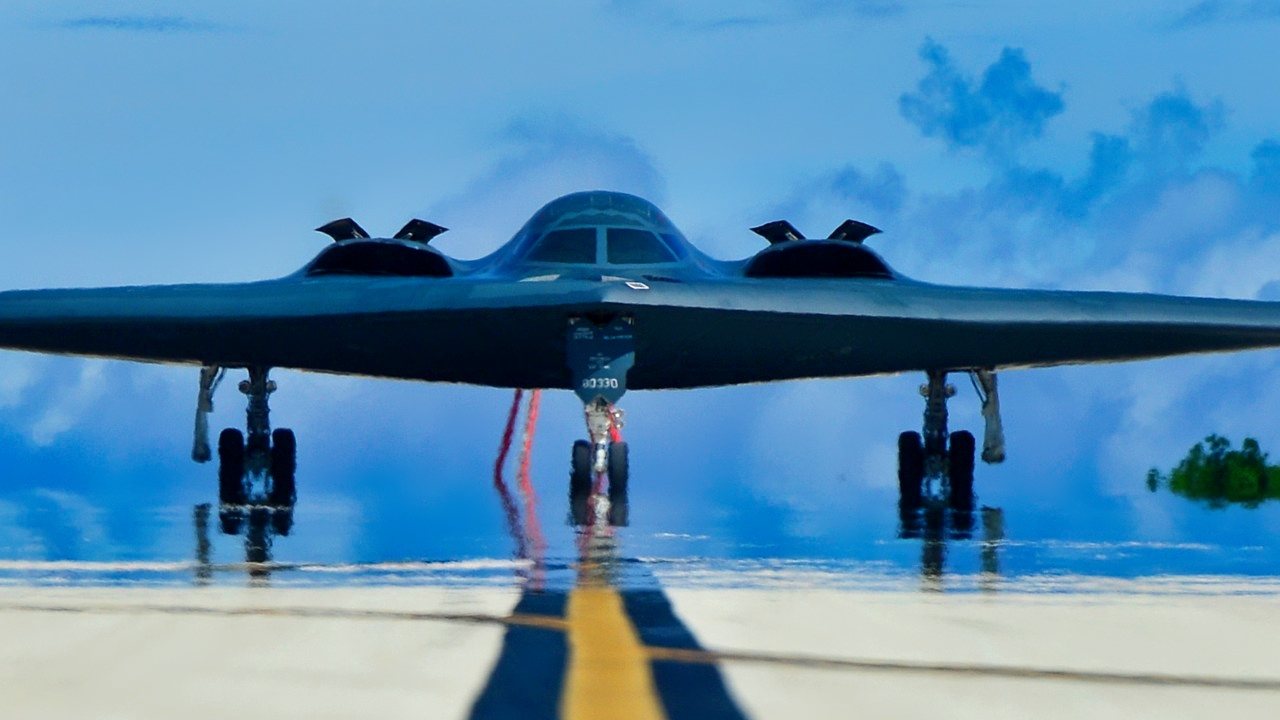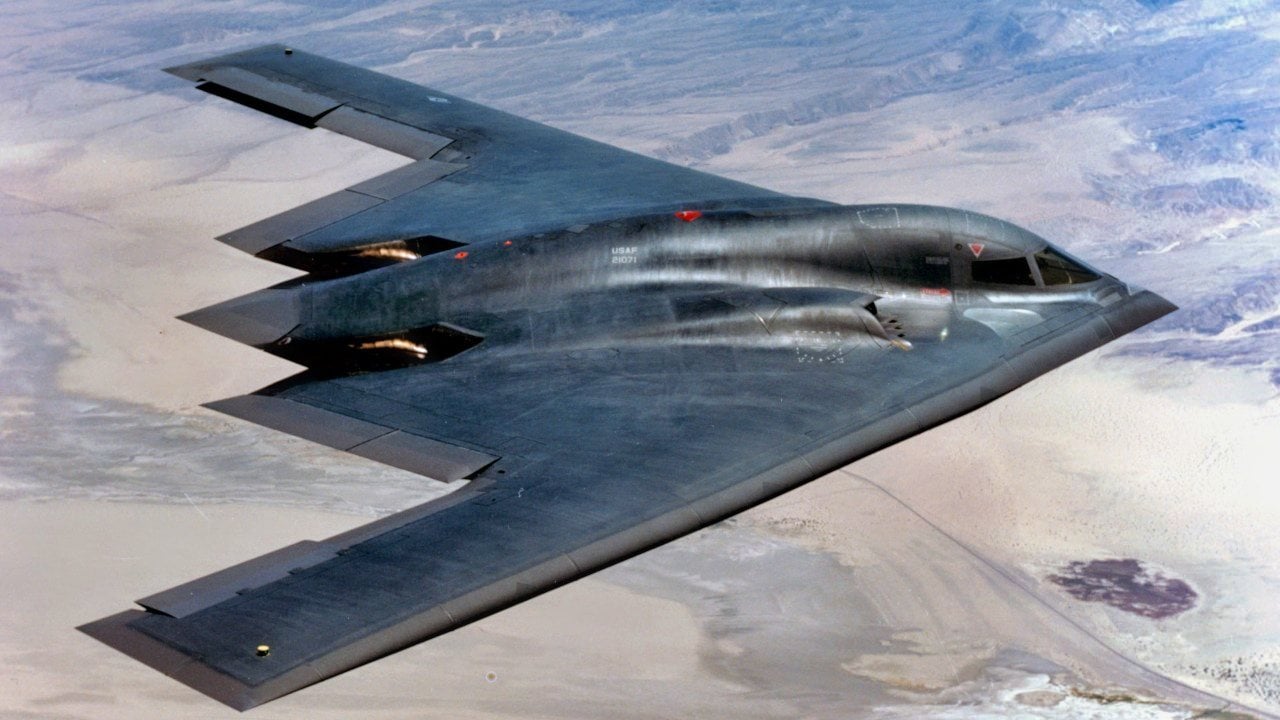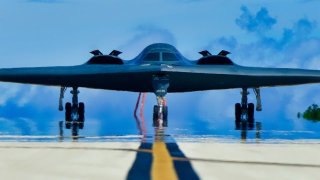B-2 Spirit: America's Badass Stealth Bomber
Able to fly 6,000 nautical miles without refueling, and travel at high subsonic speeds, the B-2 remains the only heavy-hitting aircraft that can strike any part of the world within hours.
Three Decades of the B-2 Spirit Stealth Bomber - On New Year's Day, football fans packed California's Rose Bowl, likely excited to see the University of Michigan Wolverines take on Alabama's Crimson Tide – but the real treat for aviation buffs was the return of the Northrop Grumman B-2 Spirit, which flew over the Tournament of Roses, showcasing the long-distance, precision capabilities of the bomber and its highly-trained pilots.
This marked a return to the B-2 to the annual event, as the Spirit was grounded last year following a December 2022 mishap.
"We are excited to return to the 2024 Rose Bowl," said Col. Keith J. Butler, 509th Bomb Wing commander at Whiteman Air Force Base (AFB), home of the B-2 Spirit. "We have enjoyed a long relationship with the city of Pasadena and are honored to bring the B-2 back to demonstrate Team Whiteman's commitment to the American people. Our mission is to execute nuclear operations and global strike…anytime, anywhere, and it would not be possible without the support of the people we serve. This is our way of saying, thank you."
The flight on January 1 also came just weeks after Team Whiteman celebrated three decades of B-2 Spirit stealth bomber airpower. The event on December 15 marked 30 years since the first arrival of the B-2 Spirit at Whiteman AFB. The celebration further included a ceremony reenacting the B-2's first arrival to the installation, while a gala was hosted in Kansas City, Missouri, on Dec. 16, 2023.
B-2 Spirit Back in the Sky
The United States Air Force's B-2 fleet spent nearly the first half of 2023 on the ground after one of the aircraft was damaged following an emergency landing at Whiteman in December 2022. It experienced an in-flight malfunction and was forced to carry out a successful emergency landing on the base's only runway. A fire erupted aboard the stealth bomber after landing. It caused damage to the airframe to the tune of at least $10.1 million, and the bomber could be out of service for at least two years while it undergoes repairs.
The U.S. Air Force Global Strike Command ordered a fleet inspection following the incident, which occurred a little more than one year after another B-2A suffered another landing mishap at Whiteman AFB.
It was also this past December that United States Air Forces in Europe & Air Forces Africa announced that on December 13, U.S. Air Force B-2 Spirits assigned to Whiteman Air Force Base, Missouri, conducted a flight from their home station to a training area over the North Sea, linking with United Kingdom Lockheed Martin F-35 Lightning II's during a long-planned Bomber Task Force (BTF) mission.
That recent mission provided combined integration with Allied fifth-generation aircraft intended to enhance multi-domain interoperability and continue the development of fifth-generation tactics, techniques, and procedures.
"Strategic bomber missions aim to deter conflict, showcasing our rapid response capability and reinforcing commitment to the U.K. and NATO," said Gen. James Hecker, USAFE-AFAFRICA commander and Allied Air Command commander. "Operating alongside RAF fifth-gen fighters enhances our strength through combined training."
Such routine BTF missions serve to demonstrate the Department of Defense's (DoD's) ability to project power and global reach through conventional bomber employment as well as its flexibility and agility to respond to evolving challenges in the operational environment.
The B-2 – America's Stealth Bomber
Able to fly 6,000 nautical miles without refueling, and travel at high subsonic speeds, the B-2 remains the only heavy-hitting aircraft that can strike any part of the world within hours.
Since its introduction in 1997, the Northrop Grumman heavy bomber has often been the first to fight. It was designed to penetrate anti-aircraft defenses and can deploy both conventional and thermonuclear weapons. It is also the only acknowledged aircraft that can carry large air-to-surface standoff weapons in a stealth configuration.
The B-2 provides the penetrating flexibility and effectiveness inherent in manned bombers, the United States Air Force noted, citing its low-observable ("stealth") characteristics that provide it the unique ability to penetrate an enemy's most sophisticated defenses and threaten its most valued, and heavily defended, targets. Its capability to penetrate air defenses and threaten effective retaliation provides a strong, effective deterrent and combat force well into the 21st century.
The revolutionary blending of low-observable technologies with high aerodynamic efficiency and large payload further provides the B-2 with important advantages over existing bombers. Its low observability offers it greater freedom of action at high altitudes, thus increasing its range and a better field of view for the aircraft's sensors. The Spirit's low observability is derived from a combination of reduced infrared, acoustic, electromagnetic, visual and radar signatures. These signatures make it difficult for the sophisticated defensive systems to detect, track and engage the B-2. Many aspects of the low-observability process remain classified; however, the B-2's composite materials, special coatings, and flying-wing design all contribute to its "stealthiness."
The B-2 can carry up to sixteen B-61 or megaton-yield B-83 nuclear gravity bombs on the rotary launchers inside its two bomb bays. The aircraft’s avionics are even hardened versus the electromagnetic pulses generated by nuclear blasts.

The Spirit's unrefueled range is approximately 6,000 nautical miles (9,600 kilometers), which allows pilots to complete the mission and get back home!
Just Twenty in Service
The first B-2 rolled out of the bomber's final assembly facility in Palmdale, Calif., in November 1988 and it flew for the first time on July 17, 1989. Originally, the Air Force had plans for 132 B-2 Spirits, but as the aircraft was a product of the Cold War, it was originally designed to penetrate Soviet air defenses.

Congress slashed the budget for the Spirit, which cut production to just twenty-one aircraft. There are currently just twenty B-2s in service with the United States Air Force today, while the service plans to continue to operate them until the mid-2030s, the end of the line is already in sight. The Northrop Grumman B-21 Raider will first supplement and then replace the B-2, by which time the Spirit will have been in the sky for just around thirty-five years.

Author Experience and Expertise
Peter Suciu is a Michigan-based writer. He has contributed to more than four dozen magazines, newspapers, and websites with over 3,200 published pieces over a twenty-year career in journalism. He regularly writes about military hardware, firearms history, cybersecurity, politics, and international affairs. Peter is also a Contributing Writer for Forbes and Clearance Jobs. You can follow him on Twitter: @PeterSuciu.
Main image is from Shutterstock. All others are Creative Commons.

